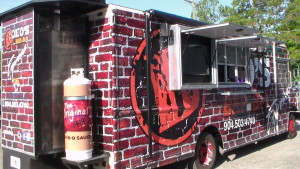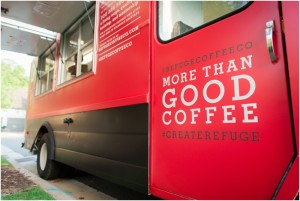The daily lunch, dinner, or breakfast service. This revenue stream isn’t a huge surprise as the owner of a concession business. After all, it is safe to say that you got into the food truck business so that you could be serving your special concoction on a daily basis. But how much can you expect to make each month or even each day that you venture out to service customers?
The income you receive from your daily service will depend on many factors but here are a few to consider:
- Locality. Where and when do people tend to eat in your local area?
- What days do you plan on vending? Restaurants typically close on Mondays because that is the slowest day of the week. When will you do your prep? Expect your busiest days to be Friday and Saturday.
- What’s your daily schedule? Will you serve breakfast, lunch, dinner, two of those, all three?
- What are your menu prices? Lower prices mean you will have to execute more sales.

You can see that there is a lot to consider, but you do have some control. For instance, you know what your menu prices are going to be, and how frequently you’d like to vend. Let’s say you would like to charge $8 per plate and you are going vend twice a day (lunch and dinner) for 5 days a week. That’s 10 shifts a week.
Now let’s start to make some assumptions. First, assume that the first couple of months of operations will be slower as you build a schedule, client list, and discover locations that work and don’t. You should also assume that cold weather months will be slower than warm weather months. Building on that, you will grow your sales transitioning from these months, but decline heading into them.
Frequency Matters
You also should think about your sales either weekly or monthly. That is, you will calculate the average amount of sales you do in this time span. Figuring out what you will be doing on a daily basis is an exercise in futility because ultimately those details don’t matter. Figure out your average sales for a week and multiply that by four, or just go ahead and think of your average daily sales then multiply that by the number of days you intend to serve in a month.
So let’s continue to build on the previous example. There are 10 shifts a week, which means about 40 shifts per month. How many sales do you think are reasonable in a given shift? Here is another assumption you will make since you don’t currently have a food truck. Let’s assume you can do 15 sales for lunch and 35 for dinner. That’s 50 sales a day.
Do you plan on selling drinks? Are your plates a la carte or will you have sides? Figure out how many of these you’ll be doing on a daily basis and then add those to your total sales. Determine if the number of sales a day makes sense for your location, truck concept, etc. Try your projections with lower numbers to see if you can maintain profitability. Remember to underestimate your income so that you can show profitability even by squeezing by.
How do you handle slower months? Consider decreasing your estimates by at least 10% each of these months. In the above example I’m expecting to earn $8000 a month on average. I’ll assume that the business is slower for the first two months, to ramp up to that average in the projections. The business will start 20% down in month 1 and the 10% down in month 2, compared to month 3. In the below example, I calculate 20% off from my $8000 avg to start and increase each month to get to $8000.
Keep Seasonality in Mind
 Since food truck business is very seasonal, continue this percent change each month during seasons (decrease your projections during cold month, increase during warm). If you continue to build your business, it is fair to assume that your sales will grow each month. As you work, you will learn better places to serve, get access to better events, increase your reputation, better strategize your marketability, etc. All of these factor into increasing revenue.
Since food truck business is very seasonal, continue this percent change each month during seasons (decrease your projections during cold month, increase during warm). If you continue to build your business, it is fair to assume that your sales will grow each month. As you work, you will learn better places to serve, get access to better events, increase your reputation, better strategize your marketability, etc. All of these factor into increasing revenue.
While building your revenue for day-to-day service, avoid huge increases, unless you are anticipating major changes to your business model. Showing steady and sustainable growth is much more convincing to potential funders.
